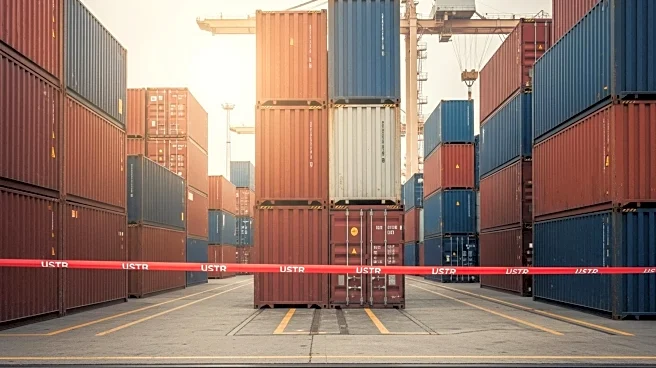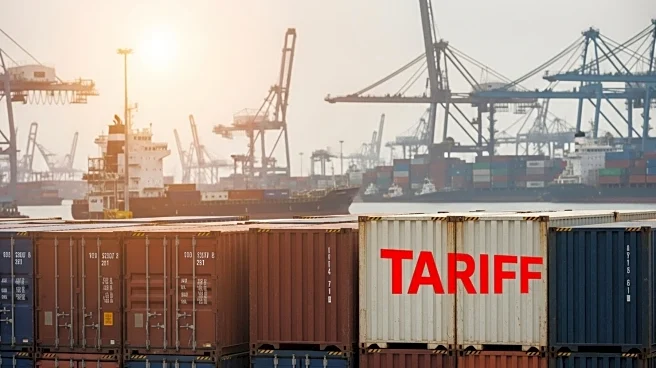What's Happening?
The Office of the United States Trade Representative (USTR) is set to implement new fees targeting Chinese dominance in the maritime sector starting October 14, 2025. These fees could impact 35% of ships in the combined bulk, crude tanker, product tanker, and container fleet when they call at US ports. Despite these fees, US importers and exporters are not expected to face increased freight rates, according to Niels Rasmussen, Chief Shipping Analyst at BIMCO. The fees will primarily affect ships that are either Chinese-owned or operated, with 70% of the affected ships falling into this category. However, more than half of the Chinese-built ships are exempt due to their size or US ownership. Bulk carriers are particularly vulnerable, with 45% potentially subject to the fees, while crude tanker and container ships face a 30% exposure, and product tankers 19%.
Why It's Important?
The introduction of USTR fees is significant as it targets the Chinese maritime sector's influence on US trade. While the fees aim to reduce Chinese dominance, the global impact may be minimal since US markets constitute only 9-19% of each sector's global ship demand. Historically, only 16-24% of US exports and imports have been handled by ships that could face these fees. The fees could lead to a shift in shipping patterns, with some ships potentially leaving US trades due to competitiveness issues. However, major liner operators, including COSCO Shipping Lines, have committed to maintaining services and competitive rates, suggesting that freight rate increases may be avoided.
What's Next?
As the fees come into effect, the maritime industry will closely monitor their impact on shipping patterns and freight rates. While COSCO Shipping Lines and other operators have pledged not to increase rates, implementation confusion could lead to short-term rate fluctuations. The industry may see a redeployment of ships to avoid the fees, potentially altering trade routes and affecting US import and export dynamics. Stakeholders will need to assess the long-term implications of these fees on competitiveness and market share within the maritime sector.
Beyond the Headlines
The USTR fees highlight broader geopolitical tensions between the US and China, particularly in trade and economic influence. The fees could be seen as part of a larger strategy to counteract Chinese economic power and protect US interests. This development may also prompt discussions on the ethical and strategic dimensions of trade policies and their impact on global commerce.










